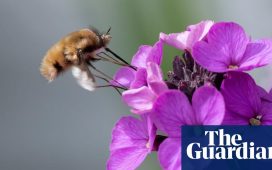I was about 10 when I first locked eyes with a sugar glider. I caught its eyes shining through the fog that our breath sent wisping across the torchlight. I remember it being tiny, soft and, true to its name, the sweetest thing I’d ever seen.
My father remembers that ranger-led walk up Black Mountain on a Canberra winter evening a little differently: “I don’t think we saw anything.”
Whether the sugar glider was real or imagined – after hours poring over A Field Guide to the Mammals of Australia – it left a lasting impression. Even as an adult, I find few things more thrilling than stealing into the bush at night to look for animals.
When I told my husband about spotlighting, he was perplexed. An American, he pointed out the madness of trying to find animals at night. Go out torch in hand in Yosemite or the Smoky Mountains and you could end in shreds.
In Australia, he indulges me. We’ve seen a family of wombats trundling down the path to the glow worm glen in Bundanoon, and spent what felt like hours watching a schoolyard drama between a bully brushtail possum and a timid, charming bandicoot in Ben Boyd national park.
Most of the time, we don’t see anything. We’re not very good at spotlighting.

Locked down and short on kicks, I wondered if I could bring my hobby into an urban environment. I ask Dr Andy Flies, a scientist at the Menzies Institute for Medical Research in Hobart, who spent a year shining torches towards hyenas in Kenya. “If you want that nearby wilderness experience, the night is probably the best time to do it,” he says.
But how do you get better at it?
The importance of eye shine
“If you’re looking for wildlife at night, the thing you’re looking for is eyes,” says Flies, who is working on a vaccine for the Tasmanian devil facial tumour disease. “If you see a little flash of light, that’s probably going to be an eye. It’s a bit of excitement to realise you’ve caught the eye of this animal, and it was looking at you too.”
Andrew O’Meara, who works in education and outreach at the Capital Woodlands and Wetlands Trust and has led plenty of night walks around Mulligans Flat in the Australia Capital Territory, says an experienced spotlighter can figure out what kind of animal they’re looking at just from the eye shine. “A brushtail possum has an orangey eye shine,” he says. “A bettong is yellower.”

Location matters too. If you spot a flash up a tree, “it’s going to be a possum or a sugar glider”.
“On the ground it could be lots of animals. If it’s hopping up and down it could be a bettong or a kangaroo. If it’s sort of ambling it could be a possum.
“A predator animal has a really bright eye shine, a sort of bluish colour.”
Kitting up
You don’t need much to get started spotlighting, O’Meara says. “Honestly, any torch is going to do the job just fine.”
He says even a phone light can catch eye shines – “if you hold it properly”.
“If you shine a phone across a field of grass in summer, you’ll get spider eye shines back.”
Flies says the easiest option is to get a powerful headlamp: “You can really see a lot of things with those.”

If using a torch, O’Meara recommends holding it at shoulder height and casting the beam up and around you for best results.
Spotlight etiquette
Flies cautions against using lights that are too bright as they can affect an animal’s night vision.
Experience tells me the same is true for humans – do not shine your torch in your spotlighting companion’s face.
There are a couple of ways around this problem. Once you’ve spotted something, O’Meara suggests, you can move the beam away from the animal so it is only illuminated by peripheral light.
“Or you can get a red light filter which dulls the light for the animal,” he says, confirming that red cellophane works for this purpose. Plenty of headlamps have a red light setting, allowing for longer observation.
“Don’t approach the animals no matter how comfortable they are around you,” O’Meara adds. “It’s much nicer to watch them.”
Spot scouting

Anywhere there are trees, you’re likely to find animals at night, Flies and O’Meara say. “If you just take the time to get out into your backyard … right there you’ll find something,” Flies says. “If you sit in a park you’ll probably see possums running around, and they’re territorial and always fighting.”
In patches of urban green space, you might spot “nocturnal birds kicking around”, O’Meara says. “And those animals that we call synanthropes – the ones that work really well in an urban environment.”
For Flies, there’s a sense of wonderment that comes from realising that even in a city there are “wild animals out there, surviving at night”. “If you put me out in the middle of a field in five days I’d be dead,” he says.
As for the time of night to go, Flies says it depends what you’re looking for. Many animals are active at transition times like dawn and dusk, but some creatures (like the devils he researches) “seem to be active much later at night”.
Stillness or motion?
Before you traipse around with a torch Flies recommends you “go outside, in a dark spot … and silently use your other senses. You’d be amazed by how much is around you – wait quietly, then if you hear something you hit them with the light.”
O’Meara agrees that if you “just hunker down and sit, you’ll be surprised at what kicks around”. But he cautions, “You have to be nice and still.”

If silence and stillness aren’t a possibility for you – say you’re with an overly excited 10-year-old with sugar gliders on the brain – O’Meara suggests taking the opposite approach, trying to cover as much ground as possible.
“The more movement you can do the better – if you can go through a nice long walk through a park you’ll pick stuff up that hasn’t had a chance to get away from you yet.”
Extra credit
Once you get a taste for spotlighting, it is easy to go in deep. O’Meara says keeping a log of what you see and how the animals behave is one great way to do this, especially if you upload that information into a citizen science database. “You might see an animal do something that’s never been seen before.”
He recommends Canberra Nature Map, which allows users to upload GPS coordinates for any animal sightings, as well as seeing what other people have spotted. The app’s geographic range now stretches way beyond Canberra.
Flies recommends the iNaturalist app for figuring out what it is you’ve just seen. You can upload a photograph to the app and image recognition software, and peer advice, will tell you what the plant or animal might be, while also contributing to scientific research.
Since animals tend to follow particular patterns, if you’ve got the yard space, you could even “purchase a relatively cheap trail camera that’s motion activated … watch that and then see what time [an animal] comes out,” Flies suggests. Then, the next night, you can cue your outside adventure for the time the camera was triggered.
Even a bit of midnight gardening can yield surprises, Flies says. Alongside discoveries like luminescent fungi, “one other thing that always shocks me is that once you start turning over soil in your backyard you’ll find things – most people garden in the day, but if you get a full shovel of dirt at night you’ll probably see things you’ve never seen before in the day”.
“Nighttime is a fundamentally different place for animals than it is for humans – there’s a lot of places where there’s a lot more out at night.”













